
How to Use BTS7960 (IBT-2) Motor Driver: Examples, Pinouts, and Specs
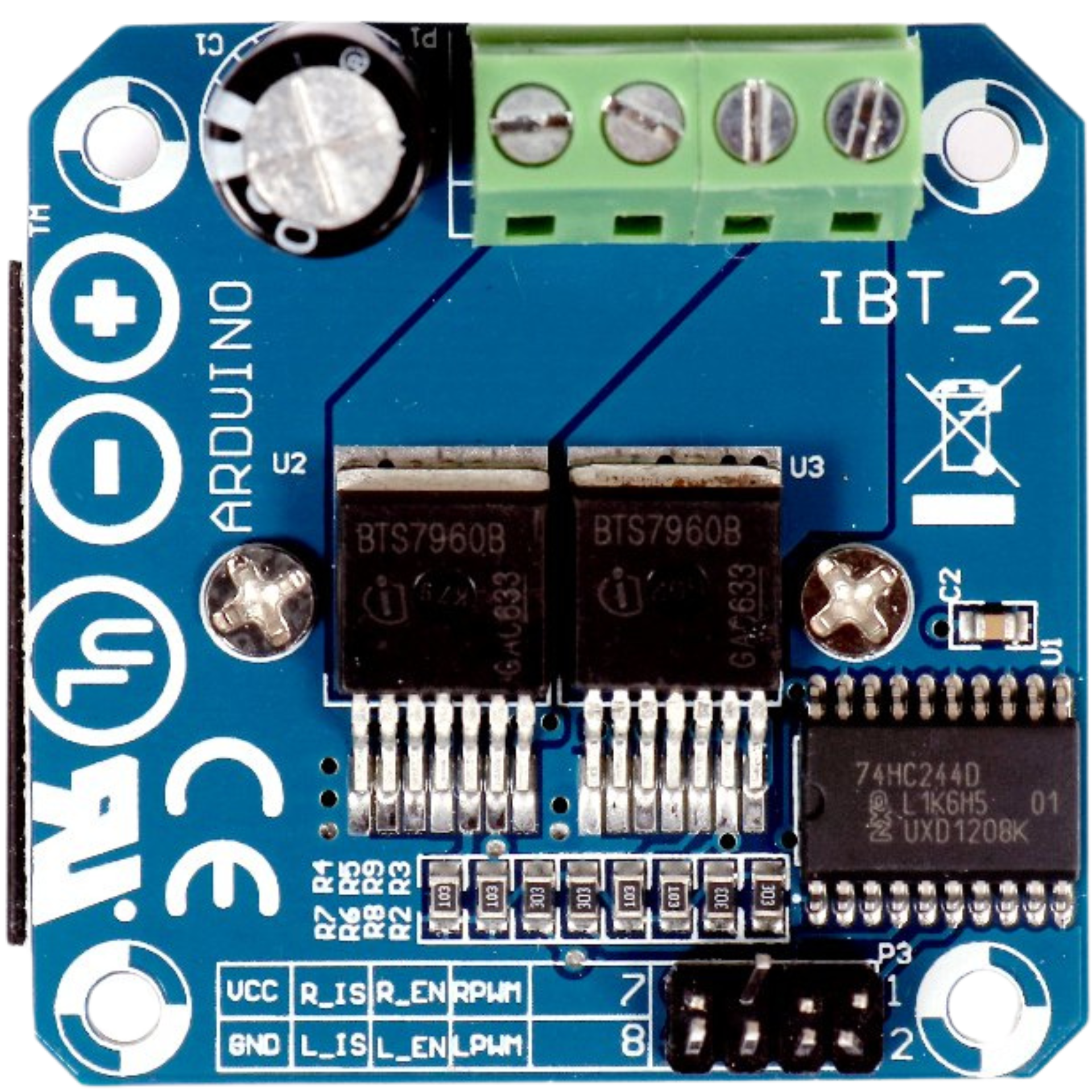
 Design with BTS7960 (IBT-2) Motor Driver in Cirkit Designer
Design with BTS7960 (IBT-2) Motor Driver in Cirkit DesignerIntroduction
The BTS7960 (commonly referred to as the IBT-2) is a high-current H-bridge motor driver designed for controlling DC motors. It is capable of handling high currents (up to 43A) and operates with PWM (Pulse Width Modulation) signals for precise motor speed and direction control. The module features built-in protection mechanisms, including overcurrent and thermal overload protection, making it a reliable choice for demanding motor control applications.
Explore Projects Built with BTS7960 (IBT-2) Motor Driver
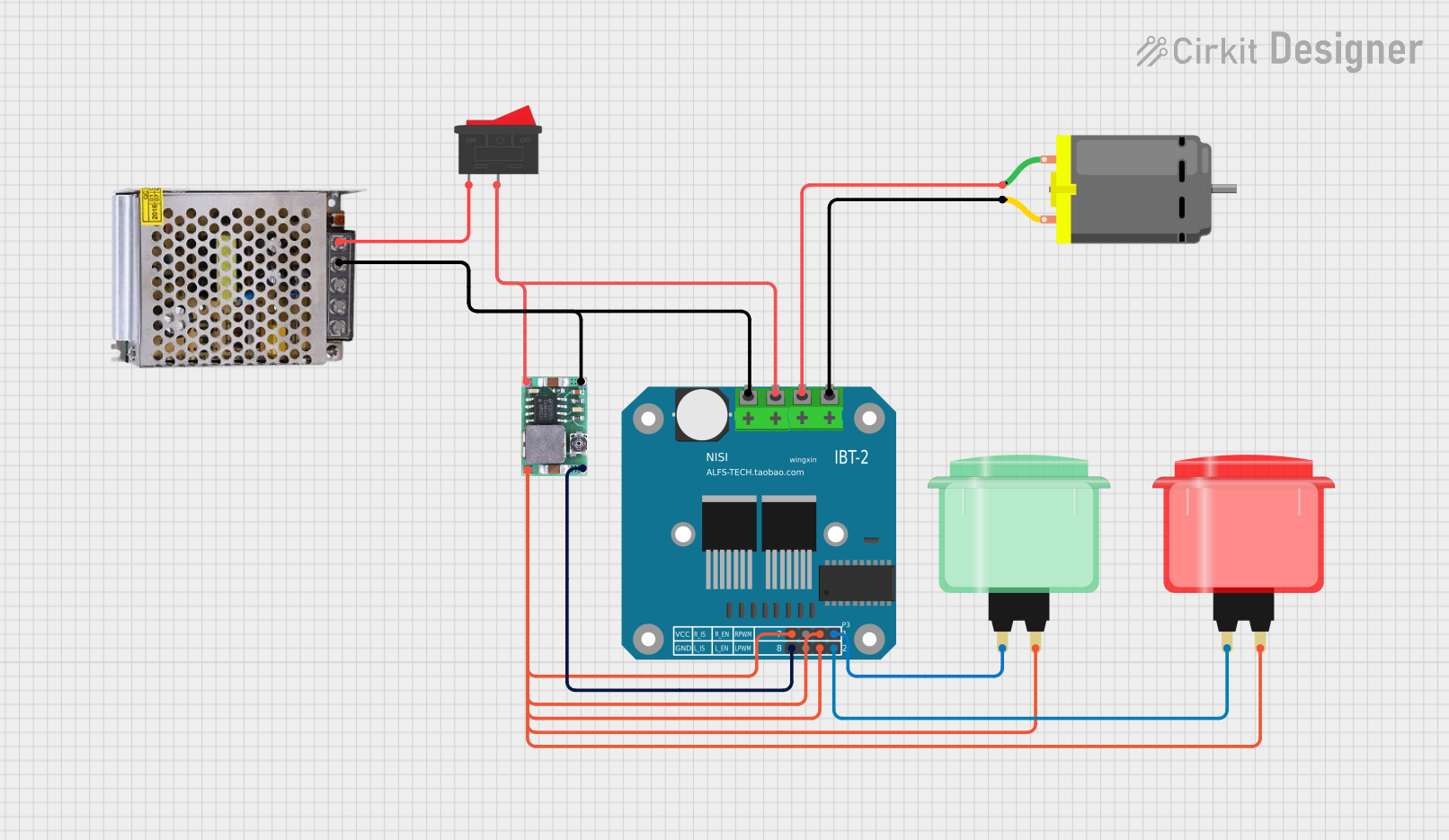
 Open Project in Cirkit Designer
Open Project in Cirkit Designer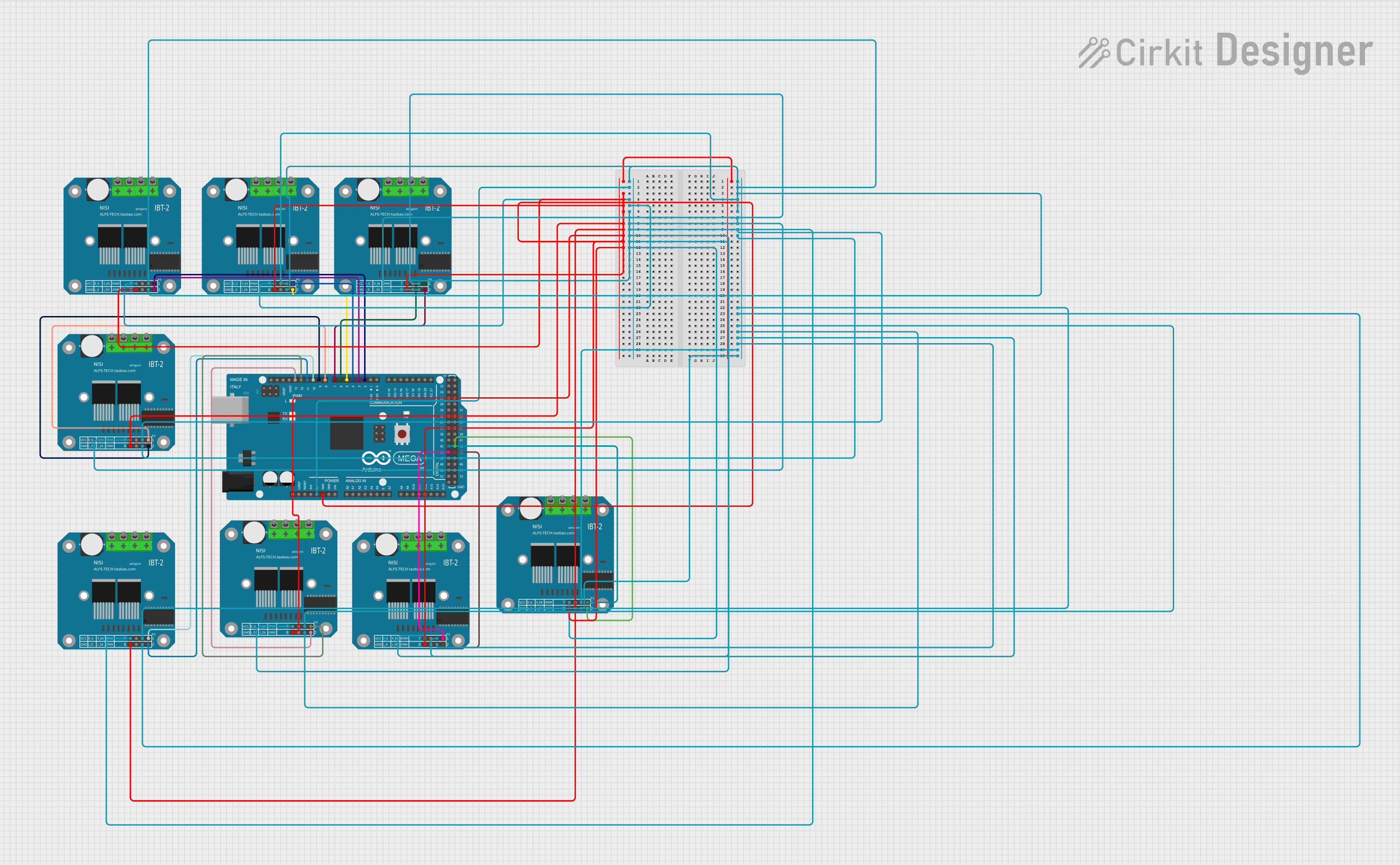
 Open Project in Cirkit Designer
Open Project in Cirkit Designer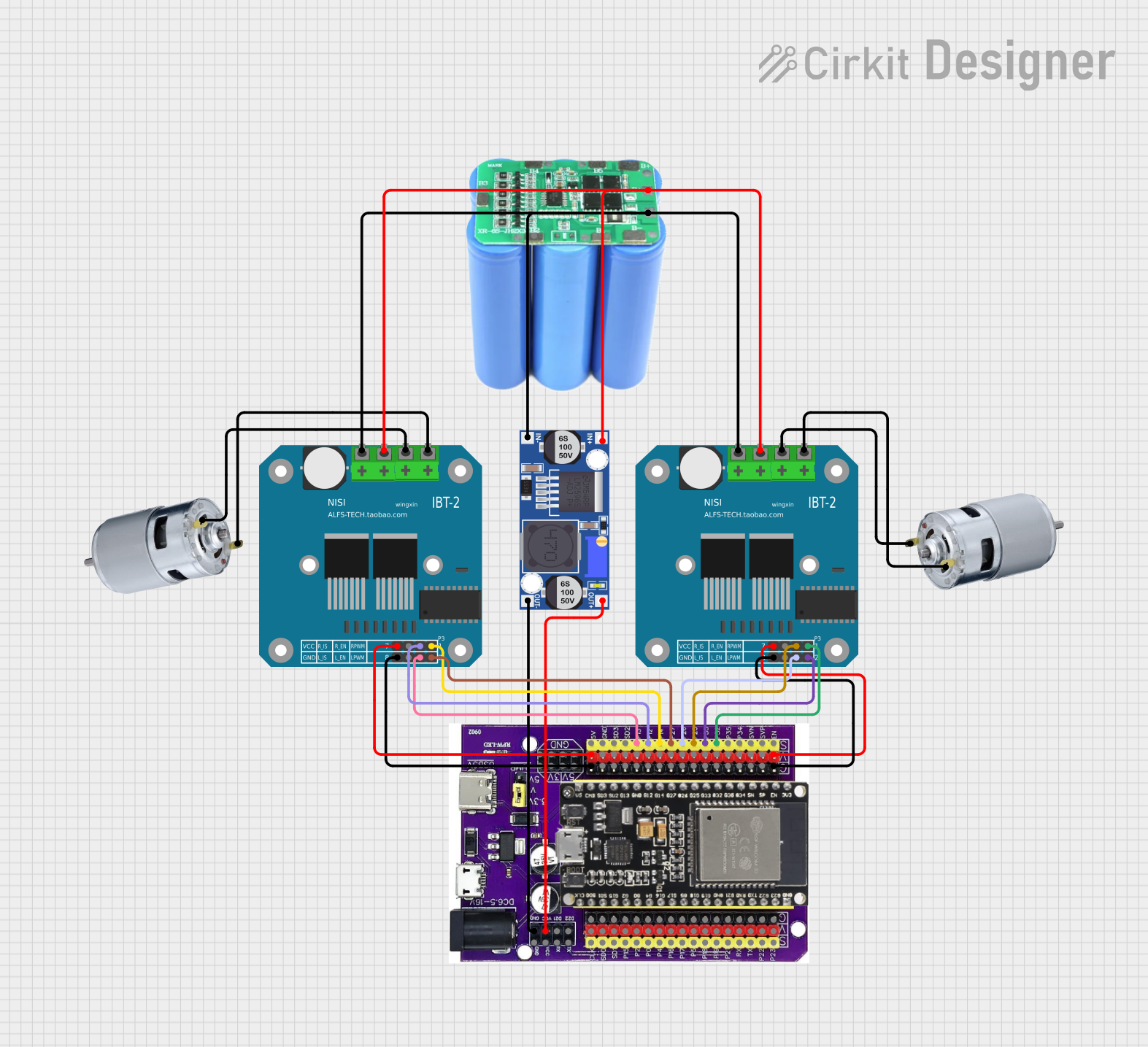
 Open Project in Cirkit Designer
Open Project in Cirkit Designer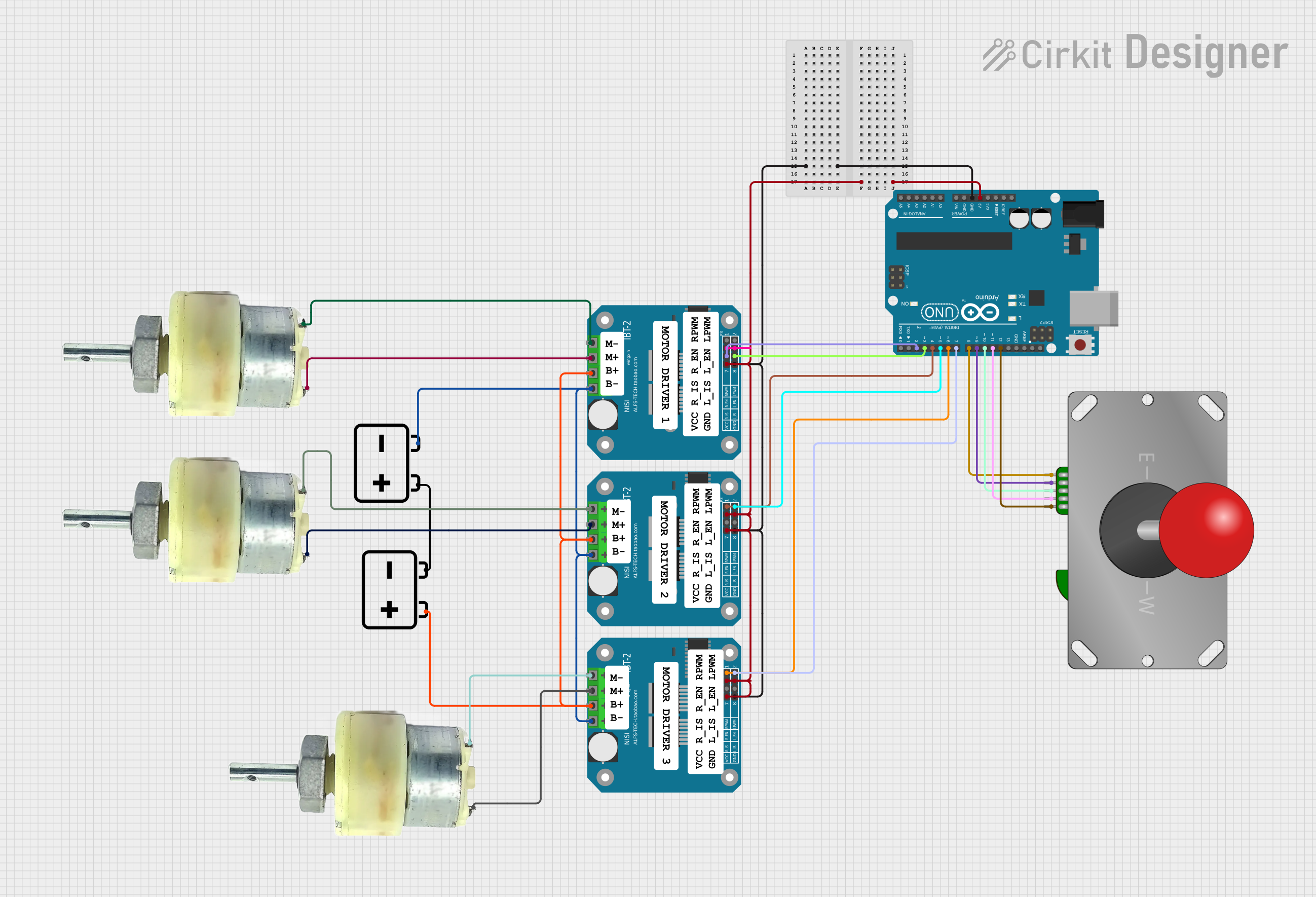
 Open Project in Cirkit Designer
Open Project in Cirkit DesignerExplore Projects Built with BTS7960 (IBT-2) Motor Driver

 Open Project in Cirkit Designer
Open Project in Cirkit Designer
 Open Project in Cirkit Designer
Open Project in Cirkit Designer
 Open Project in Cirkit Designer
Open Project in Cirkit Designer
 Open Project in Cirkit Designer
Open Project in Cirkit DesignerCommon Applications and Use Cases
- Robotics and automation systems
- Electric vehicles and motorized carts
- Conveyor belts and industrial machinery
- Remote-controlled cars, boats, and drones
- DIY projects requiring high-power motor control
Technical Specifications
The BTS7960 motor driver is designed to handle high-power motors with ease. Below are its key technical details:
| Parameter | Value |
|---|---|
| Operating Voltage | 5V logic, 6V–27V motor voltage |
| Maximum Continuous Current | 43A |
| Peak Current | 50A |
| PWM Frequency | Up to 25kHz |
| Logic Level Input Voltage | 3.3V or 5V (compatible with Arduino) |
| Overcurrent Protection | Yes |
| Thermal Shutdown | Yes |
| Dimensions | 43mm x 45mm x 28mm |
Pin Configuration and Descriptions
The BTS7960 module has a total of 8 pins for interfacing with a microcontroller and motor. Below is the pinout:
| Pin Name | Type | Description |
|---|---|---|
| VCC | Power Input | 5V input for logic circuitry. |
| GND | Power Ground | Ground connection for logic circuitry. |
| RPWM | Logic Input | PWM signal for controlling motor speed in one direction. |
| LPWM | Logic Input | PWM signal for controlling motor speed in the opposite direction. |
| R_EN | Enable Input | Enable pin for the right half-bridge. Set HIGH to enable. |
| L_EN | Enable Input | Enable pin for the left half-bridge. Set HIGH to enable. |
| MOTOR+ | Motor Output | Connect to the positive terminal of the motor. |
| MOTOR- | Motor Output | Connect to the negative terminal of the motor. |
Usage Instructions
How to Use the BTS7960 in a Circuit
Power Connections:
- Connect the motor's power supply (6V–27V) to the module's power input terminals.
- Connect the motor's terminals to the MOTOR+ and MOTOR- outputs.
- Provide 5V to the VCC pin for the module's logic circuitry.
Microcontroller Interface:
- Connect the RPWM and LPWM pins to PWM-capable pins on your microcontroller.
- Use the R_EN and L_EN pins to enable or disable the respective half-bridges.
Control Logic:
- To move the motor in one direction, send a PWM signal to RPWM and set LPWM to LOW.
- To reverse the motor, send a PWM signal to LPWM and set RPWM to LOW.
- Adjust the duty cycle of the PWM signal to control motor speed.
Important Considerations and Best Practices
- Ensure the motor's power supply voltage is within the module's operating range (6V–27V).
- Use a heat sink or active cooling if operating at high currents for extended periods.
- Avoid connecting both RPWM and LPWM to HIGH simultaneously, as this may damage the module.
- Use appropriate fuses or circuit breakers to protect the motor and driver from overcurrent.
Example Code for Arduino UNO
Below is an example of how to control the BTS7960 motor driver using an Arduino UNO:
// Define pins for BTS7960 motor driver
#define RPWM 9 // PWM pin for forward direction
#define LPWM 10 // PWM pin for reverse direction
#define R_EN 7 // Enable pin for right half-bridge
#define L_EN 8 // Enable pin for left half-bridge
void setup() {
// Set pin modes
pinMode(RPWM, OUTPUT);
pinMode(LPWM, OUTPUT);
pinMode(R_EN, OUTPUT);
pinMode(L_EN, OUTPUT);
// Enable both half-bridges
digitalWrite(R_EN, HIGH);
digitalWrite(L_EN, HIGH);
}
void loop() {
// Move motor forward at 50% speed
analogWrite(RPWM, 128); // 50% duty cycle (128 out of 255)
analogWrite(LPWM, 0); // LPWM set to LOW
delay(2000); // Run for 2 seconds
// Stop the motor
analogWrite(RPWM, 0);
analogWrite(LPWM, 0);
delay(1000); // Pause for 1 second
// Move motor in reverse at 75% speed
analogWrite(RPWM, 0); // RPWM set to LOW
analogWrite(LPWM, 192); // 75% duty cycle (192 out of 255)
delay(2000); // Run for 2 seconds
// Stop the motor
analogWrite(RPWM, 0);
analogWrite(LPWM, 0);
delay(1000); // Pause for 1 second
}
Troubleshooting and FAQs
Common Issues and Solutions
Motor Not Running:
- Ensure the motor's power supply is connected and within the specified voltage range.
- Verify that the R_EN and L_EN pins are set to HIGH.
- Check the PWM signal connections and ensure the duty cycle is not zero.
Overheating:
- Use a heat sink or active cooling if the module is operating at high currents.
- Ensure the motor is not drawing more current than the module's maximum rating.
Erratic Motor Behavior:
- Check for loose or faulty connections.
- Ensure that only one of RPWM or LPWM is receiving a PWM signal at any given time.
Module Shuts Down Unexpectedly:
- This may be due to overcurrent or thermal protection. Reduce the motor load or improve cooling.
FAQs
Q: Can I use the BTS7960 with a 3.3V microcontroller?
A: Yes, the BTS7960 is compatible with both 3.3V and 5V logic levels.
Q: What is the maximum PWM frequency supported?
A: The module supports PWM frequencies up to 25kHz.
Q: Can I control two motors with one BTS7960 module?
A: No, the BTS7960 is designed to control a single motor. For dual-motor control, use two modules.